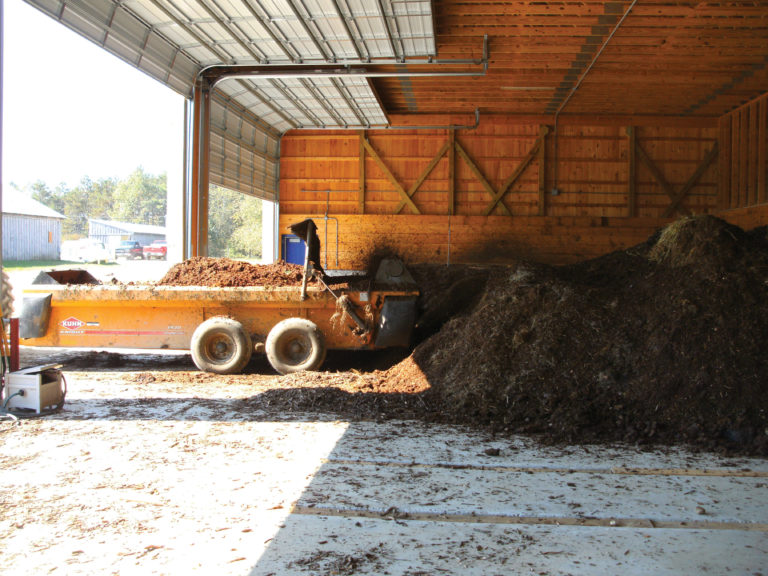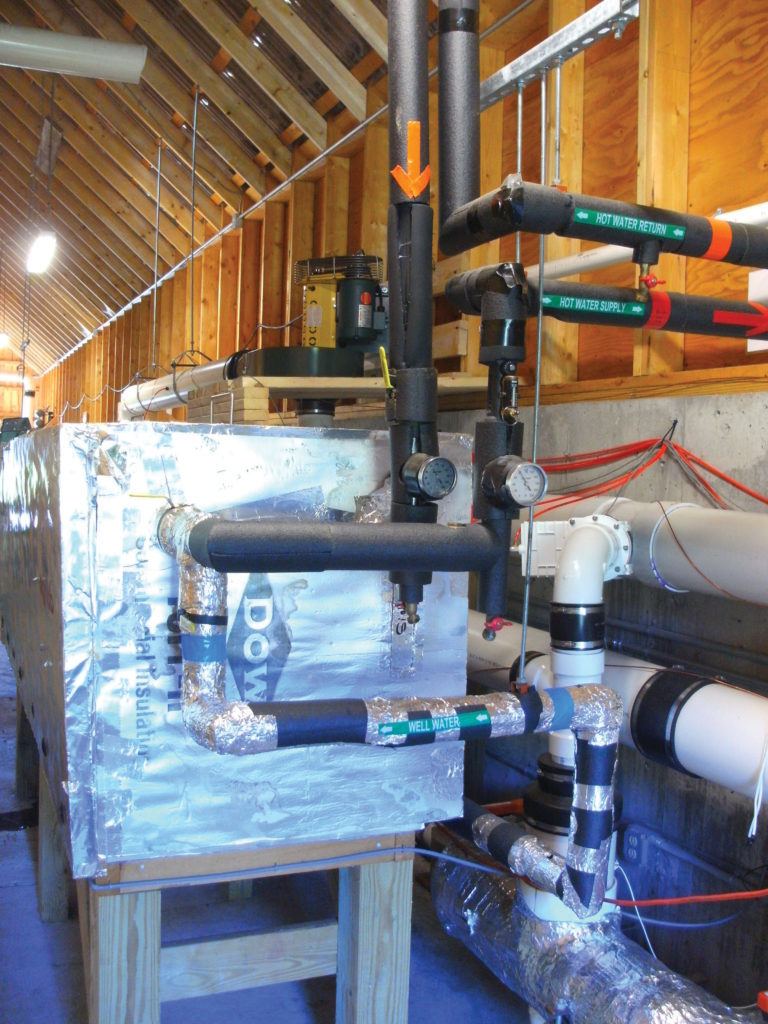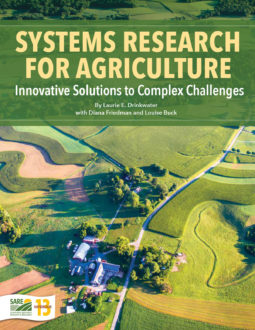
When the University of New Hampshire (UNH) converted a decades-old, 300-acre farm into an organic dairy in 2005, making it the country’s first commercial-scale organic dairy at a land-grant university, researchers wanted to identify management actions that could make the farm self-sustaining in its nutrient and energy requirements. To do this, the research team has been using a life cycle assessment (LCA) approach to better understand a range of complex physical, biological and human factors affecting farm activities.
The stated objective of the nine-year SARE-funded study, which began in 2008, is to measure all of the materials and energy flows occurring across the farm in an annual production cycle, to eventually achieve a closed-system, energyindependent operation. This means, for example, that the farm will potentially satisfy most of its nutrient needs through careful manure management and composting, without losing nutrients into the nearby Lamprey River, and that a 160-acre forest on the property will provide both animal bedding and energy.
“There was nothing out there that had looked at the energy or nutrient balance of organic dairies, so it seemed like a wonderful place to start,” says John Aber, a UNH forest ecologist who is coordinating the project. “We can actually look at whole-farm operations in the context of economic and environmental sustainability.”
As a first step, researchers created a nutrient flow diagram and an energy inventory assessment, using the farm as the boundary. They also studied poorly understood aspects of nutrient flows and energy requirements, such as how nutrients exit the farm’s pastures into waterways, and the potential of the on-farm woodlot to provide energy for heating.
A common, effective way in which LCA is applied to agricultural research is by using collected data to identify parts of a cycle that are ripe for improvements. In this case, UNH faculty have been conducting mini-studies of parts of the cycle related to manure handling and composting, on-farm bedding production and the use of geothermal energy for milk cooling, and to compare mixed crop and forage systems. Their grant is structured so that promising techniques they identify will be implemented and continually refined.

A major challenge in using the LCA approach in an agricultural context relates to capturing accurate data on all the possible components and stages of the cycle being studied. Aber and his colleagues defined their goals and established their system boundaries at the farm level in part to help them manage this complexity. For example, by having the goal of making the farm energy independent—instead of making the life cycle of the milk produced there energy independent— they do not need to account for some factors for which data collection might pose a challenge, such as transportation of goods to and from the farm.
Another advantage to setting the system boundary at the farm level was that many records and data sets already existed. For example, the initial analysis of nitrogen flows into and out of the farm relied heavily on existing university records. To prepare the nitrogen budget, researchers first used these records and on-farm measurements to quantify major imports onto the farm such as hay, grain and atmospheric deposition; internal nutrient sources such as manure, hay and forage; and the primary output, milk. Next, they used a literature review to attach numbers to the budget items. By doing this, the researchers identified the major knowledge gaps that required more study, including on-farm manure production, nutrient exports into the environment and the potential productivity of the farm’s woodlands for bedding and energy, all of which became the focus of more in-depth studies.
Coinvestigators Bill McDowell, an ecosystem ecologist, and Matt Davis, a hydrogeologist, helped fill the gap in understanding how nutrients are exported from the farm into the environment. They conducted a two-year study to establish a three-dimensional groundwater model of the farm to see how and where water and nutrients were escaping. In addition, they sampled groundwater wells and surface runoff monthly to quantify nutrient exports and establish important baselines.
These baselines will allow researchers to assess changes they make to management practices, such as improvements to the physical configuration of barns, to the way manure is handled and to grazing strategies. McDowell says, “We can’t tell how successful we’re being in terms of environmental impacts and retaining valuable nutrients unless we’re monitoring what is lost in runoff.”
Researchers are also studying alternative production techniques that will move them closer to their goal of achieving a closed-system, energy-independent farm. For example, Davis is planning to install and test a geothermal system for chilling the milk before it goes into storage tanks, to reduce dependence on off-farm energy. Cool water will be pumped from about 300 feet underground and will be run in pipes beside separate pipes containing milk, thereby cooling the milk. Then, the water will be recycled underground to cool before being pumped back up, starting the process anew. Over about two years, Davis will quantify how much energy is transferred from the milk to the geothermal well and will monitor temperature to see whether the well’s temperature rises over time, which would determine the system’s longterm sustainability and efficacy.
“It’s not well quantified that these milk chillers really help reduce the energy load on the system,” Davis says. “This is going to be useful even beyond dairy, to understand how this energy is flowing into this geologic material.”
The researchers using the Organic Dairy Research Farm also see potential for other systems-based studies. For example, faculty members plan to incorporate multiple species into grazing systems, develop on-farm processing for cheese and other value-added products, conduct a carbon footprint analysis, and study the farm in the broader context of regional food systems.
